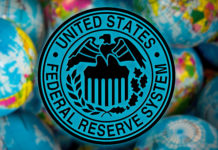The Reserve Bank Board has confirmed its decision in July to taper its bond purchases from $5 billion to $4 billion per week. In extending the review date from mid November to mid February it has effectively lifted the purchases it is likely to have expected in August by around $13 billion. It has significantly lifted its growth forecast for next year consistent with a phasing out of QE as early as May.
The Reserve Bank Board decided to confirm its decision in July to taper its bond purchases from $5 billion to $4 billion from the first week in September.
However, presumably in recognition of the increasing risks to the economic outlook and the deteriorating health situation since the August Board meeting, it has committed not to review the purchase program until at least mid-February 2022.
At the August meeting the commitment to the $4 billion purchase pace was to be reviewed by mid-November.
On the reasonable assumption that the expectation in August was to have scaled back the weekly program to $3 billion from November with a further review in February today’s decision lifts the volume of bonds to be purchased out to mid-February by around $13 billion relative to the likely expectations in August.
Holding weekly purchases at $5 billion until a review in November would have lifted the bond purchases out to November by $11 billion and if the early evidence around the reopening in the economy was encouraging the reduction in purchases to $3 billion could have still been a possibility.
This decision surprised us in the sense that we expected that the deterioration in the near-term economic outlook and health situation would have triggered a stronger response – to lift purchases to $6 billion with a review in November.
Under that scenario we still expected that the QE would have been phased out by May 2022, after clear evidence that a very strong recovery was underway in 2022.
A reduction in purchases to $2 billion per week from mid-February would be consistent with our growth scenario for the Australian economy entailing a 7.4% growth recovery in 2022. (recall that growth in the year to June 2021 was 9.6%) and with a possible full phasing out of QE by May although many other factors including market stability and the actions of other central banks will impact that decision.
Consistent with extending the commitment on the current purchase program it is clear that the Bank has adjusted its growth forecasts since the August meeting.
It recognises that GDP will decline materially in the September quarter (compared to “at least 1%” in August) but the setback is expected to be only temporary and the recovery will be delayed rather than derailed. However, it also recognises that the early stages of the recovery (the bounce back) will be slower than earlier in the year.
Next year it is forecasting that the “pre -Delta” path will be resumed in the second half of the year.
Westpac agrees with the general profile described in the Governor’s narrative but expect that even with our forecast 7.4% growth rate next year activity levels will fall a little short of the “pre-Delta” path.
By implication, unless the Bank is much more conservative than our forecasts for the contraction in September quarter it too will be anticipating a growth recovery pace in the region of 6-7% for 2022.
The Board maintains its commitment to a flexible approach to the bond purchase program.” The program will continue to be reviewed in light of economic conditions and the health situation.” But has not emphasised its flexibility to increase purchases, as we saw in the July Statement.
It now seems highly unlikely that there will be any future move to increase purchases.
We agree with that assessment – the time for such action was this Board meeting when the level of uncertainty about the forecasts is at its greatest.
Conclusion
Today’s decision has recognised the increase in risks associated with the health developments since the August Board meeting. Around $13 billion more bonds are now committed to be purchased out to February relative to the likely expectations in August.
Those arguing for a delay in the taper were, effectively, advocating that an additional $11 billion should be bought out to November.
From our perspective an earlier lift in purchases, by delaying the taper, while the economy is facing its most difficult times and greatest uncertainty would have been preferable.
Indeed we favoured an even bigger increase in purchases to around $22 billion.
Our forecast for growth in 2022 is 7.4% and it appears that the Board is now of a like mind under that outlook it is reasonable that the Board would be expecting a possible phasing out of QE as early as May next year.
But that decision will be contingent on the Bank’s assessment of the impact on market stability of a significant reduction in the purchase pace once there is clear evidence that a strong recovery is underway.
Other factors that will impact that decision will include the policies of the US FOMC and the path of the Australian dollar.












